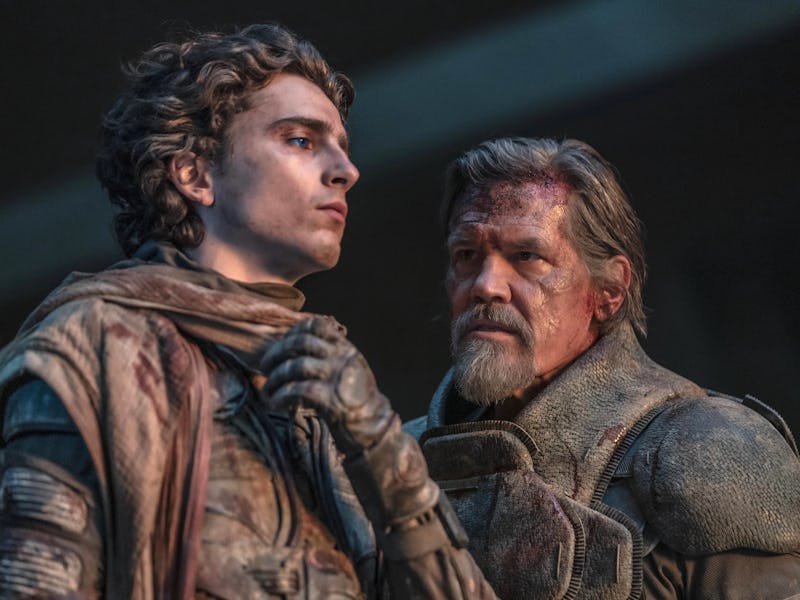Could Dune 2's Biggest Change Actually Still Be Canon?
Wait, did Denis Villeneuve adapt one of Paul’s visions?

The ending of Dune: Part Two drastically changes the way the Atreides family defeats their greatest foe. Yes, wicked Baron Harkonnen gets what’s coming to him in both the novel and the film, but his famous death scene, as written by Frank Herbert, doesn’t play out in the Denis Villeneuve movie in the same way. Or, maybe it does? Some eagle-eyed Dune readers have pointed out that Herbert’s novel surprisingly accounts for one of the biggest changes in Dune: Part Two, and actually, what Villeneuve has done is created an alternate Dune timeline, which is weirdly supported by the text of Dune.
Here’s how this branching Dune timeline theory works, and why it brilliantly fixes book versus movie canon problems. At least a little bit. Spoilers ahead.
Alia’s absence in Dune: Part Two
Alia (Alicia Witt) in the 1984 Dune, doing her best to creep out everybody.
Because of the condensed timeline in Dune: Part Two, and the fact that Denis Villeneuve and co-writer Jon Spaihts “were a little leery of that talking toddler,” Alia Atreides remains unborn at the end of Dune: Part Two. This means Alia is not physically around in the present tense to be the one who delivers the killing blow to the Baron. In the novel, and in the 1984 and 2000 adaptations, a precocious, spooky two-year-old Alia is the one to kill the Baron. But, in Dune: Part Two, because Alia is still in the womb, it’s Paul who does the deed, saying, “Grandfather... you die like an animal.”
While there are plenty of changes from the book in Dune: Part Two, for many fans, this one feels like the most obvious one. Dune can’t be Dune unless a knife-wielding toddler kills the Baron, right? Well, turns out there’s a Frank Herbert fix.
Is Paul killing the Baron... canon?
There’s more than one way to kill a Baron.
As pointed out by fans online, and specifically by Muad'Dibidus on X (Twitter), a scene in which Paul says “Hello, Grandfather...” does exist in the book, just not the way you might think. At the end of the first section of the novel, “Dune,” and before the second section, “Muad’Dib,” Paul experiences branching visions of possible futures, and in one of those futures, he does directly confront the Baron.
On page 199 of the 1990 ACE paperback edition (page 323 of the current Kindle edition), we get this passage:
“He had seen two main branching along the way ahead — in one he had confronted an old evil Baron and said: “Hello, Grandfather.” The thought of that path and what lay along it sickened him. The other path held long patches of grey obscurity except for peaks of violence.”
So, here’s the theory: What we’re getting in Dune: Part Two is that branching outcome, the significantly worse timeline that Paul glimpsed in the book. And if that’s true, then Dune: Part Two suddenly gets away with a lot of changes simply because we don’t know the details of why that path “sickened” Paul or how that path was different from the one he eventually found himself on.
But, if Dune: Part Two does take place in an alternate branch within Paul’s visions, then any changes, including the condensed timeline and Chani’s new attitude towards Paul’s prophecy, suddenly become canon. The book is one branch of Paul’s vision, and the two Denis Villeneuve movies are another. All of Paul’s paths lead him to the desert, but the specifics of what happens after that depend on wish spice vision you believe.